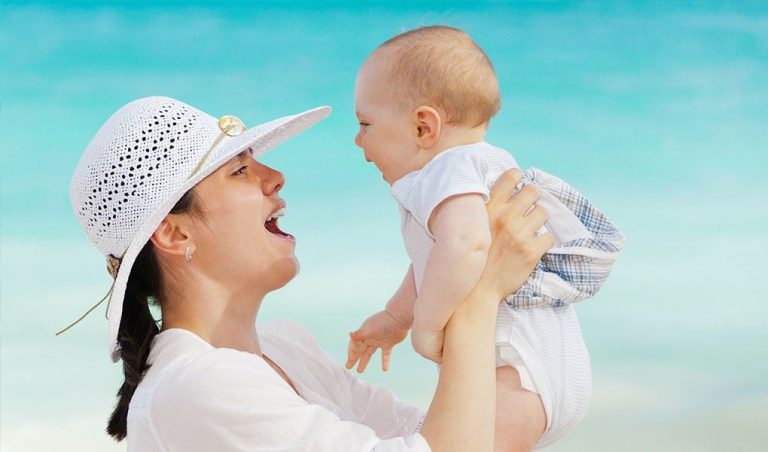1 Month Baby Development. What you need to know
2-month-old baby development →
Note: This post may contain affiliate links, which means if you buy from my link I might make a small commission. This does not affect the price you pay. See the full affiliate disclosure here.
Has your baby turned one month old yet? If yes, then congratulations! You’ve survived your first month with a newborn.
Having a newborn at home can be overwhelming. Fortunately, by the time your little one turns 1 month, you’ve probably gotten used to night feedings, cries, and general infant care.
In other words, life is getting a little bit easier.
And now that you can finally start enjoying motherhood, here is what you can expect in terms of 1-month baby development.
What to expect from 1-month-old babies?
Before we continue, I need to remind you that all babies develop at different rates. With this said, the post below is intended as a guide into the 1-month baby development, and not a rule.
Physical growth
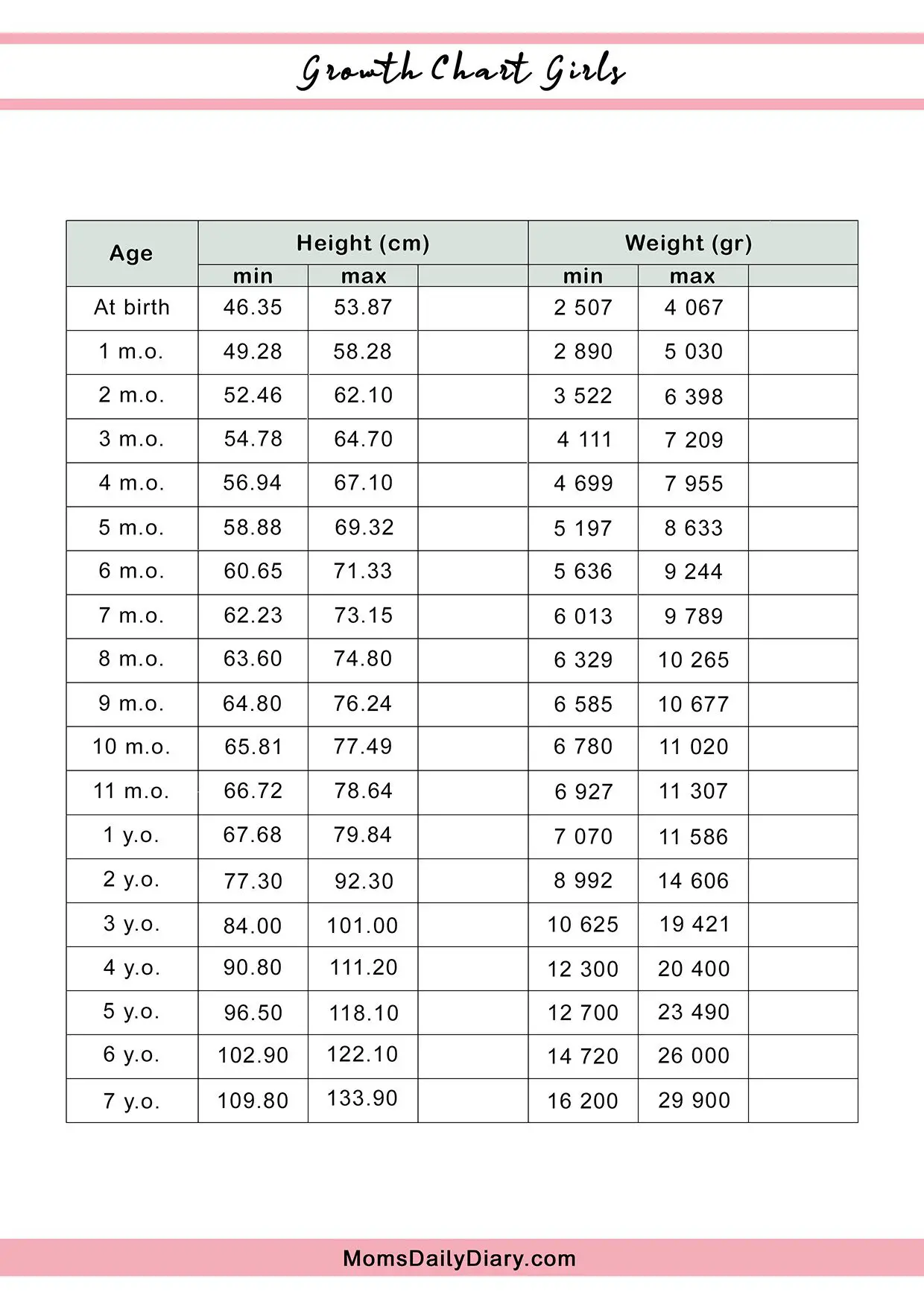
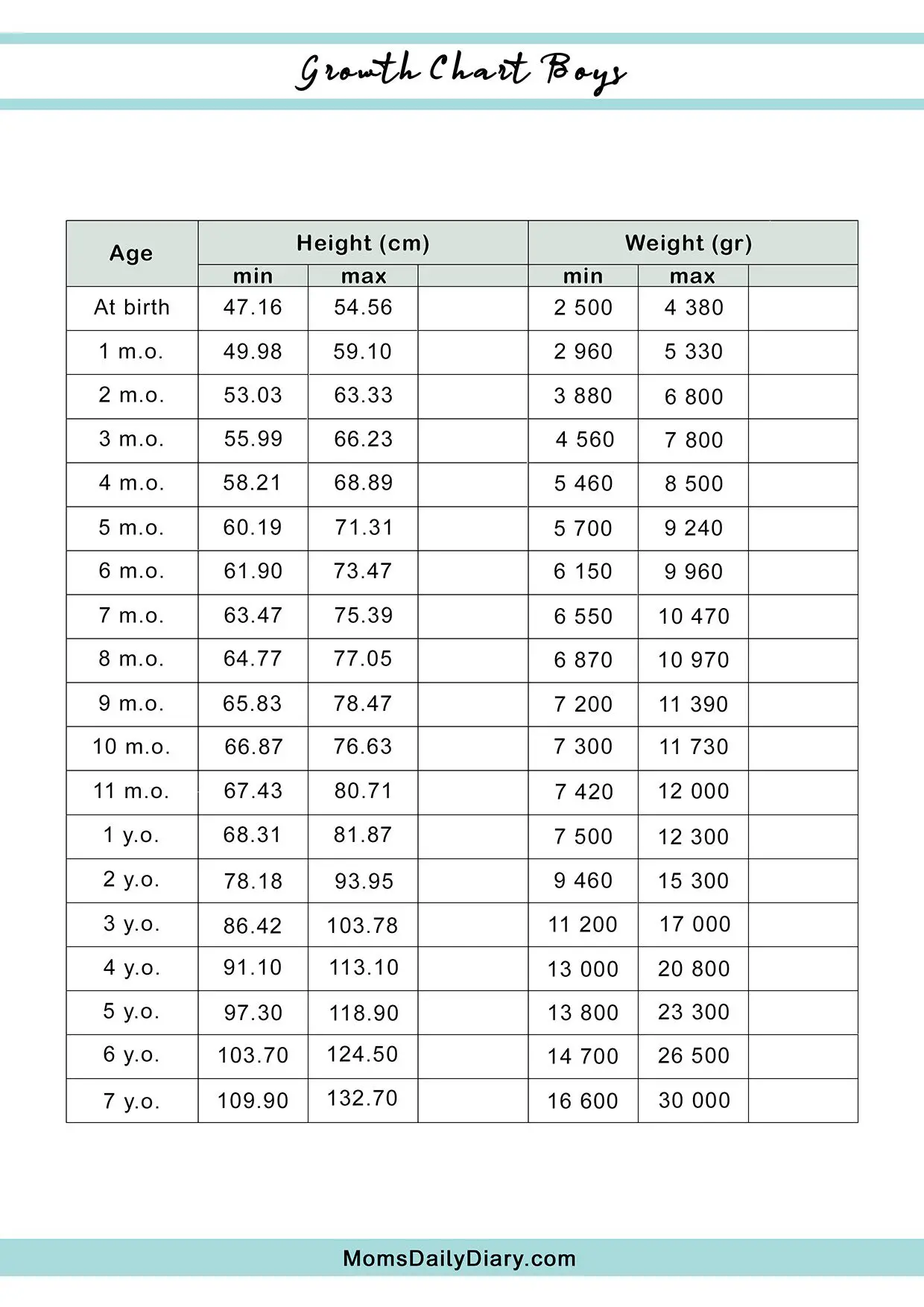
Your baby’s healthcare provider will measure their height, weight, and head circumference at your one-month-old check-up. And if you’re a new parent, don’t be surprised if it’s a lot more than you expected.
During this second month, they will continue to grow rapidly and could gain up to 4cm (1.5in) and 900gr (2lb).
However, don’t worry if your baby has gained less than that. Babies are different, they are born with different birth weights and gain differently. What is important is that they grow at a steady rate.
To help you keep track of your baby’s physical growth, you may try using a baby growth chart. You can use a smartphone app or download and print one to fill on paper (feel free to use those above).
Sleep
At this age, your baby will still sleep 14 to 17 hours a day, including 4-5 naps through the day.
Around the sixth week marker, which is also considered the end of the newborn stage, your baby may start sleeping through the night for 6 or more hours. However, for breastfed babies, this moment may come a bit later.
When this happens it’s time to create a bedtime routine, if you haven’t done so by now. The routine will help you to eventually align the baby’s sleep cycles to your preferred schedule.
Feedings
By this time you’ve probably gotten the grasps of breastfeeding or have decided to feed your baby formula (or both). Whichever is the case, your baby still feeds on milk only.
If you’re breastfeeding your baby they should need about 8 feeds a day, while formula-fed babies get hungry every 3-4 hours.
Keep burping your baby after each feed, and during, if the feeding takes a while. Otherwise, the swallowed air could make them uncomfortable. Don’t forget to keep a burp cloth around since spitting small amounts of milk while burping is not uncommon.
Crying
During this month, crying will start to become less of a habit, and more of a way to try to communicate with you.
While we can’t exactly talk about language development at this early age, you may notice that your baby’s cries differ now. You will soon be able to tell if they cry because they’re hungry, bored, tired, or just irritated.
And when you respond to their needs, they will be able to present you with a smile, that will just melt your heart.
Sight and hearing
Your baby’s senses have also developed quite a bit. They are getting curious about their surroundings.
They may now start following objects and focus on a human face or a moving object. You could help them practice this new ability by holding a finger or a toy in front of them and moving it from side to side.
Their hearing is also getting better. However, keep in mind that while music and familiar voices tend to calm your baby, sudden or loud noises may now startle them.
Motor skills and body muscles
While you needed to support your baby’s head during their first month at all times, now their neck muscles are getting stronger. During tummy time, your baby should keep trying to lift their head and keep it up for longer periods of time due to the increased upper body strength.
Slowly but steady, your baby is also learning to control their movements better. Some of their newborn reflexes will now start to fade away. The rooting reflex and the Moro reflex would be among the first to go.
As part of the 1-month baby development, your baby will start stretching their arms and legs instead of holding them bent and close to the body. And although it’s still too early for them to roll over on their own, it may be time to start keeping a closer eye so they don’t roll over on accident while kicking with their legs.
Colics
Experts say, less than 20% of babies suffer from colic. In my experience, however, that number should be a lot higher.
Of course, all babies cry. But there are signs that can hint you that colics are the reason for their behavior:
- The crying starts every evening and continues for an hour or more
- There is no other obvious reason for the cries
- Crying tends to be more high-pitched than usual
- Usual methods don’t calm them down
- Crying appears more than 3 nights a week for 3 or more weeks in a row.
Colic usually starts when your baby is about 2 to 4 weeks of age and may continue up to the baby’s 3rd or 4th month.
While there is still no confirmed reason for colics to appear, experts believe that it may be due to:
- Gas. Gas discomfort is one of the most common reasons for colic. You can tell by the gas the baby passes while crying. In such cases, it sometimes helps to put pressure on the tummy by putting them face down across your knees. Warming the tummy with a warm pillow or towel also can reduce their discomfort, however, be very careful not to burn them. Finally, make sure you’re not overfeeding your baby and burp them after each feeding.
- Food intolerance. Some babies may react to the food their mother eats when breastfeeding. Formula-fed babies, on the other hand, may be sensitive to the milk protein. In both cases, the intolerance causes discomfort in the little one making them cry without any other obvious reason like dirty diapers or hunger. Your healthcare provider should be able to diagnose if your baby suffers from any food intolerance.
- Overstimulation. When babies get overwhelmed they may react with continuous crying because they are unable to soothe themselves. In this case, gentle rocking while walking, calm music, or a vibrating baby seat can do miracles.
- Medical problem. Sometimes, the cries can be a reaction to an illness, rather than a temporary condition. If you think your baby may be suffering from other health issues, contact your healthcare provider as soon as possible.
While colic usually lasts for a short time, to a mom trying to soothe her baby it may seem like a lifetime. If at any point you feel like it’s just too much to take, try to ask another family member to take care of the baby for a while, so you can take some quality me-time to recharge.
Related read: 19 Old Remedies For Colic That Will Calm Your Baby
How do you play with your 1-month-old baby?
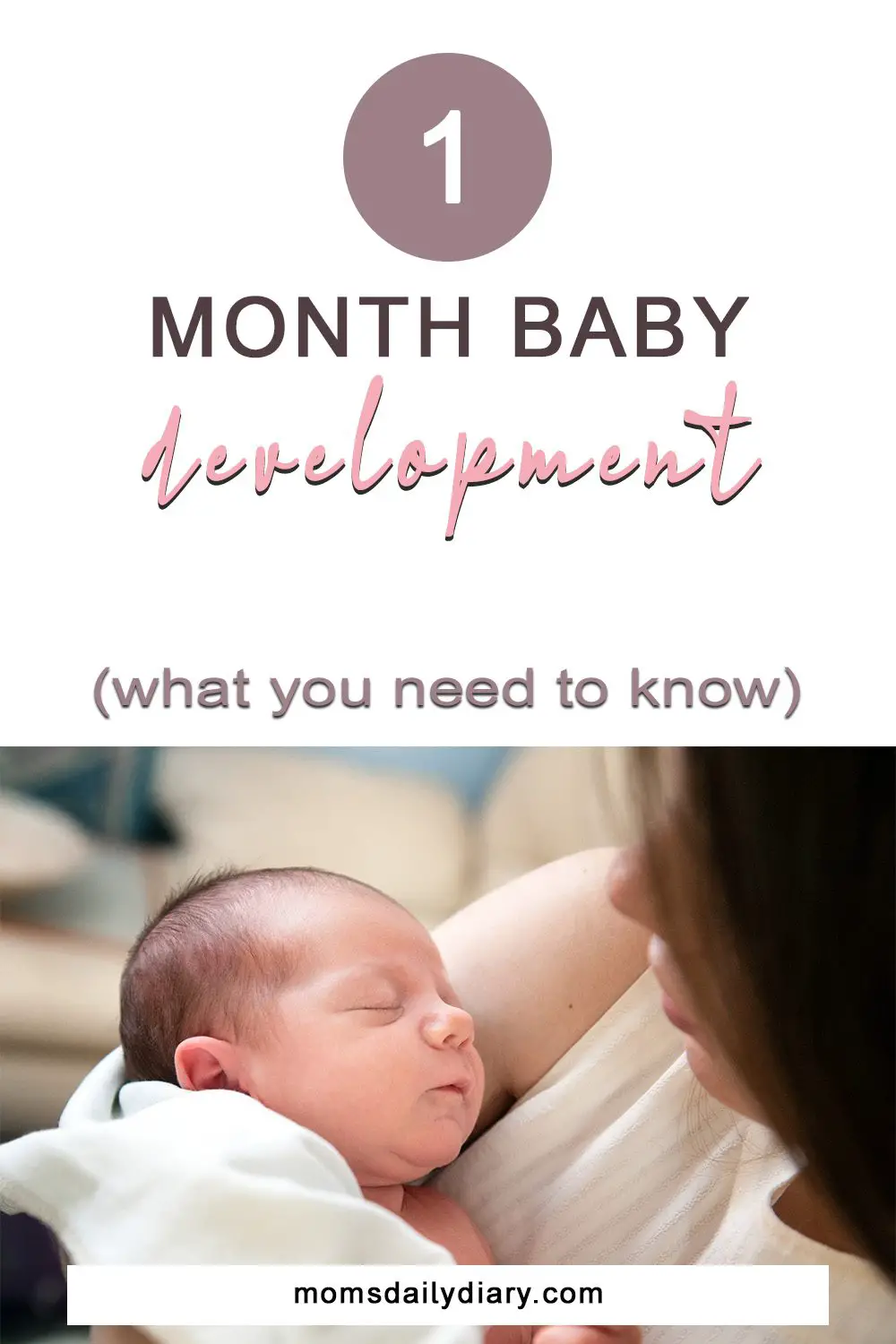
Tummy time
At this point in your 1-month baby development, tummy time is more important than ever.
And since your baby is now actively looking at their surroundings, you may try adding a play mat or a boppy pillow. This will make tummy time a lot more enjoyable for your baby.
Visual stimulation
A great way to stimulate your baby’s sight development is by introducing them to objects with bright and contrasting colors.
Today, kid stores are full of a wide range of toys developed especially for early visual stimulation. Extremely popular are also the black and white toys and flashcards.
If you have a printer at home, you can also create your own flashcards easily. Just find clean-looking, black and white silhouettes of simple things like popular animals or everyday objects.
Now is also the time to install a baby mobile over the crib so they can improve their focusing and tracking skills.
Communication and eye contact
You may think they are still too young but your one-month-old baby is already developing their social skills. They are now ready to respond with a smile and this smile is known as a social smile.
Help them out by talking to them and reacting to their coos and smiles. Use words, sounds, and facial expressions to engage them in the conversation.
It may not seem like much at this point, but this will create the basis for their language development and baby talk later on.
Baby massage and exercise
Baby massage serves not just to please your baby but it means to relax their rapidly developing muscles.
After your baby turns 1 month old you can start exercising them by:
- gently stretching their arms and legs
- making them clap
- move their legs like riding a bicycle
All these exercises will help your baby strengthen their muscles and smooth their movement.
1-month baby development milestones
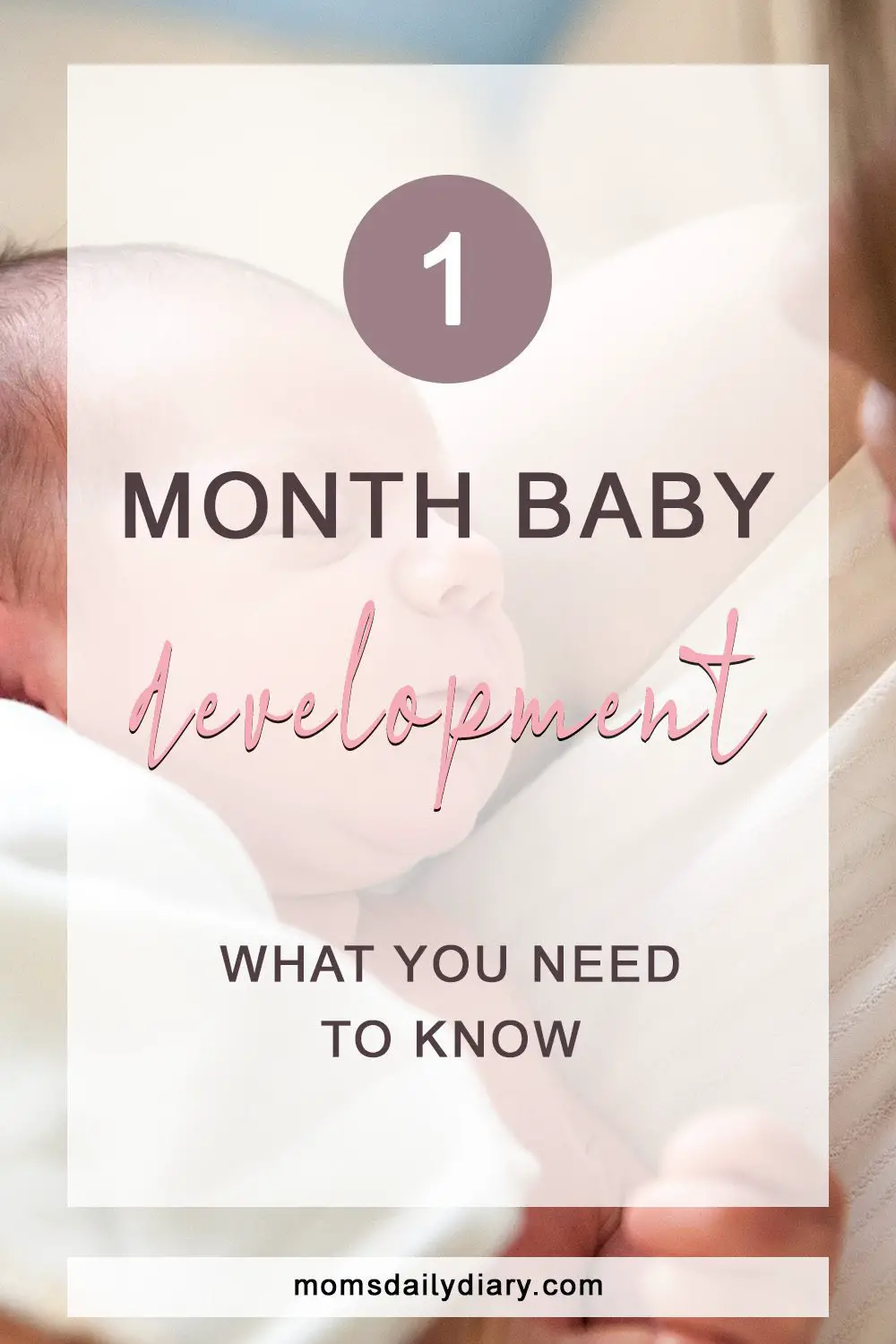
Before diving deeper into the developmental milestones associated with 1-month-old babies it’s important to note again that all babies are different.
While young babies follow the same development path, they do it at their own pace, so don’t worry too much if you haven’t met all the milestones listed below by the end of this month.
- The baby smiles when you talk to them.
- They respond to loud sounds by crying or startling.
- The baby starts to loosen their tight fists.
- They begin to recognize the faces of mom and dad.
- During tummy time, the baby can briefly lift its head.






